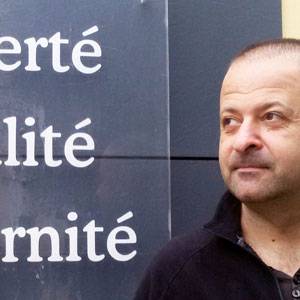Modellazione multi-fisica per l'analisi di edifici alti in condizione di incendio
La valutazione della sicurezza strutturale in caso di incendio può essere ottenuta mediante analisi multi-fisiche avanzate con riferimento diretto al moderno approccio al fuoco basato sulle prestazioni (Performance-Based Fire Approach).
Memoria tratta dagli Atti del XXIV CONGRESSO CTA, Torino 30 settembre - 2 ottobre 2013
SOMMARIO
La progettazione degli edifici alti, nell'ottica della sicurezza antincendio, presenta problematiche specifiche per una serie di ragioni, in particolare per la valutazione dello sviluppo dell'incendio (azione termica) e la risposta del sistema strutturale al carico termico (comportamento strutturale). In relazione all'azione dell'incendio, i moderni grattacieli sono spesso costituiti da compartimenti antincendio che di solito non sono presi in considerazione dalle attuali normative. È necessaria un'analisi accurata del contesto fuoco per comprendere le dinamiche del fuoco nell'edificio specifico. In relazione al comportamento strutturale, in caso d'incendio, la passiva resistenza al fuoco di elementi strutturali e la robustezza intrinseca del sistema sono le uniche misure su cui fare affidamento al fine di mantenere l'integrità strutturale dell'edificio durante e dopo l'incendio per evitare gravi perdite economiche dovute a cedimenti strutturali e non strutturali. La valutazione della sicurezza strutturale in caso di incendio può essere ottenuta mediante analisi multi-fisiche avanzate con riferimento diretto al moderno approccio al fuoco basato sulle prestazioni (Performance-Based Fire Approach).
SUMMARY
High-rise buildings pose specific design challenges with respect of fire safety for a number of reasons, in particular the evaluation of both the fire development (fire action) and response of the structural system to fire (structural behaviour). In relation to the fire action, modem high-rise buildings often present fire compartments that are not usually accounted for in the current codes and standards. A comprehensive analysis of the fire environment is required to understand the fire dynamics in the specific building. In relation to the structural behaviour, under fire conditions, the passive fire resistance of structural elements and the intrinsic robustness of the system are the only measures to rely on in order to maintain the structural integrity of the building during and after the fire and avoid major economic losses due to structural and non-structural failures. The evaluation of the structural safety in case of fire can be achieved by means of advanced multi-physics analyses with direct reference to the modem Performance-Based Fire Approach.
INTRODUCTION
Structural integrity of buildings and safety of people in urban areas have been often endangered in the past by malevolent or accidental fires. Fires cause many hundreds of deaths and millions of dollars of property loss each year [ 1].
Fire safety engineering can be defined as the application of scientific and engineering principles to the effects of the fire in order to reduce the loss of life and damage to property by quantifying the risks and hazards involved and provide an optimal solution to the application of preventive or protective measures. Fire safety is a rapidly expanding multidisciplinary research topic. lt requires the integration of many different fields of science and engineering [2].
Three different aspects can affect fire design of both non-structural and structural measures in tall building:
- evacuation of the building;
- fire spread;
- the susceptibility of tall buildings to disproportionate collapse.
In relation to the first aspect, it should be considered that time necessary for full building evacuation increases with building height. Tue human behaviour is one of the most significant issues to consider [3]. The egress system design requires some form of engineering analysis to be conducted to determine the time taken to evacuate the building under different scenarios.
The analysis typically compares a Required Safe Egress (RSET) versus the Available Safe Egress Time (ASET) [ 4]. In addition a tall building can contain mixed occupancies and therefore different egress times and different protection systems.
In relation to the fire spread, the presence of large compartments is often required in tall buildings and is nowadays also a desired characteristic of many offices and residential premises as well. Nevertheless, prescriptive design and verification methods for structural fire safety can only be applied to compartments not exceeding specific dimensions and design of larger compartments often represent a challenge for architects and structural engineers.
The susceptibility to disproportionate collapse is one the most important topic in tall buildings because the consequences of a fire -induced collapse are enormous in term of safety of people and integrity of the structure and the risk associated to the event can be significant, even if the occurrence of a structural fire is very low. In addition tall buildings generally are considered iconic because they are unusual in height and design. Also for this reason, the loss of these structures is not acceptable by the society. The organization of the structural system is one the most important aspect in order to evaluate the progressive collapse susceptibility. The ratio of strength and stiffness of adjacent elements can influence the progressive collapse susceptibility of the system [ 5]. Another consideration concerning the propagation of failures is that a particularly dangerous situation is represented by a possible spread of failures to elements not directly involved in the fire, i.e. element that due to their location or because of greater insulation have still a relatively low temperature at the time of failure [ 6].
PER APPROFONDIRE L'ARGOMENTO SCARICA L'ARTICOLO INTEGRALE

